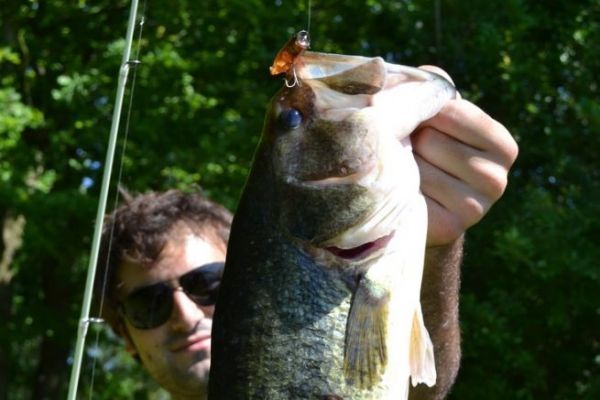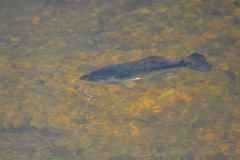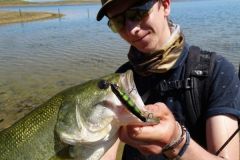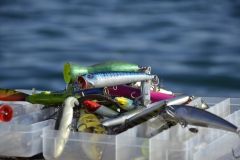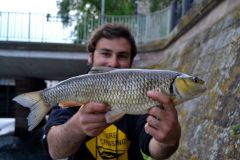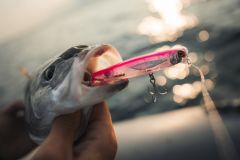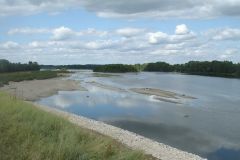Popper principle
The popper is a surface lure named after the noise it makes when animated! It emits a characteristic "pop" on the surface when animated with a jerk of the tip. The popper is a lure with a circular cross-section, a pisciform silhouette and a concave (hollow) cup-shaped mouth.
It's this cut that will draw in air just below the surface film and emit a "pop".
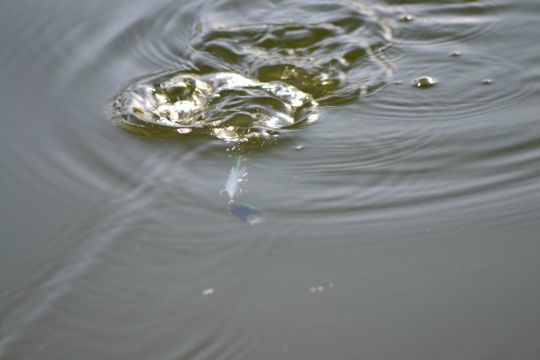
The popper is not limited to this animation and stands out from other surface lures by the noise and great turbulence it emits.
It's an indispensable lure for stalking black bass, especially in fine weather. Our centrarchid is very receptive to prey on the surface. Its upturned mouth makes it a formidable predator of unfortunate creatures high up in the water. These include frogs, fish, mice, insects and even fledglings...
In addition to its formidable effectiveness, especially in summer, the popper is a very fun lure to animate and generates strong sensations at the touch!
Techniques and animations
The popper comes to life on the surface and allows you to beat from the surface to find active, preying black bass to attack on the surface.
There are several animations:
The first is to make short scion strokes to produce a pop and generate a few splashes. The noise often arouses the curiosity of black bass, who don't hesitate to come to the surface and grab the popper.
When there are ripples or chases, you can use longer pulls, which generate more splashes and even more noise! The popper also produces bubbles below the surface, simulating a hunt or the flight of panicked small fry. A real lifesaver on active fish.
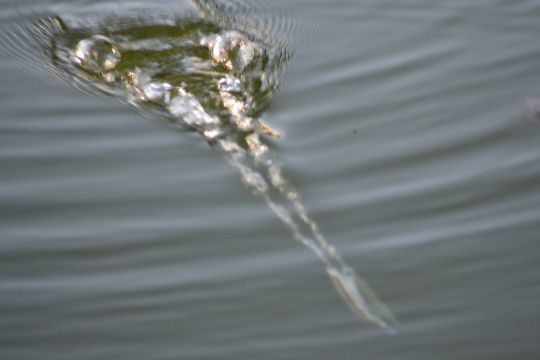
Contrary to popular belief, the popper can often be used for walking-the-dog animation. A zigzag from left to right caused by a linear retrieve on the reel interspersed with small, regular strokes of the scion. While walking-the-dog may not be as easy to achieve as with a stickbait, it does allow you to vary your animations and easily find what triggers the black bass to strike.
You can also leave your lure motionless on the surface. This is called do-nothing. This can work on wary or curious fish which may be attracted to the surface after a noisy animation or just as the lure drops into the water.
You can, of course, mix these animations together, the trick being to find out what makes black bass rise to the surface and what encourages them to grab your popper!
The right equipment
To my knowledge, there is no rod that is really adapted to the specific use of the popper for tracking black bass. However, an M to MH rod will be suitable, depending on the size of the lures used and the size of the environment. The more you fish in an open environment, the more comfortable a light rod that doesn't require too much bridling will be.
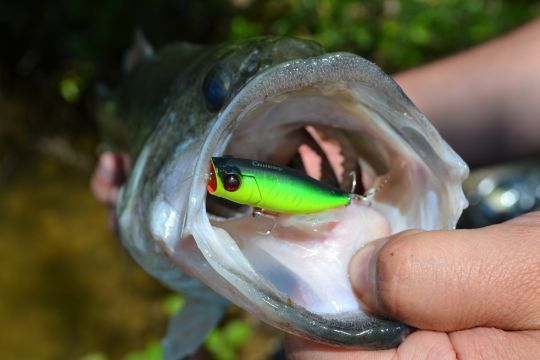
You need a responsive tip (fast or extra-fast) that doesn't absorb tip blows and allows every little animation to be transmitted to the popper. A rod that's too soft or regular will absorb your wrist strokes and won't transmit well the animations you want to achieve. The rod must be directive.
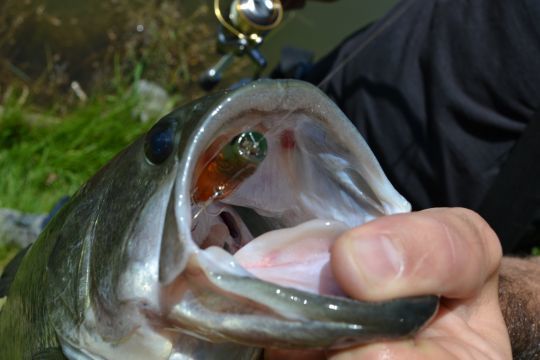
In the same vein, the use of a braid is a real plus, as its low elasticity makes it easier to reproduce animations. What's more, the popper "pulls" through the water, so you need to hook hard and wide. The force of the strike must be transmitted to the popper as much as possible.
